-
 Bitcoin
Bitcoin $106,731.2224
-1.05% -
 Ethereum
Ethereum $2,444.9804
-1.20% -
 Tether USDt
Tether USDt $1.0003
0.01% -
 XRP
XRP $2.1882
0.09% -
 BNB
BNB $651.1435
-0.61% -
 Solana
Solana $148.3252
-2.09% -
 USDC
USDC $1.0000
0.01% -
 TRON
TRON $0.2787
0.55% -
 Dogecoin
Dogecoin $0.1598
-3.16% -
 Cardano
Cardano $0.5520
-2.43% -
 Hyperliquid
Hyperliquid $39.0960
-2.64% -
 Bitcoin Cash
Bitcoin Cash $516.9519
2.98% -
 Sui
Sui $2.7011
-2.95% -
 Chainlink
Chainlink $13.0582
-1.71% -
 UNUS SED LEO
UNUS SED LEO $8.9250
-2.53% -
 Stellar
Stellar $0.2359
-0.18% -
 Avalanche
Avalanche $17.3856
-3.73% -
 Toncoin
Toncoin $2.8095
-3.56% -
 Shiba Inu
Shiba Inu $0.0...01121
-1.95% -
 Litecoin
Litecoin $85.2795
-0.85% -
 Hedera
Hedera $0.1471
-2.15% -
 Monero
Monero $319.8004
1.12% -
 Dai
Dai $1.0001
0.01% -
 Ethena USDe
Ethena USDe $1.0001
0.02% -
 Bitget Token
Bitget Token $4.5344
-1.07% -
 Polkadot
Polkadot $3.3224
-2.96% -
 Uniswap
Uniswap $6.9697
-2.75% -
 Aave
Aave $266.1658
-2.25% -
 Pepe
Pepe $0.0...09414
-3.41% -
 Pi
Pi $0.4913
-3.29%
How to use Trust Wallet to vote on governance proposals?
Trust Wallet lets users vote on blockchain governance proposals by connecting to dApps and casting votes with eligible tokens.
Jul 01, 2025 at 09:15 pm
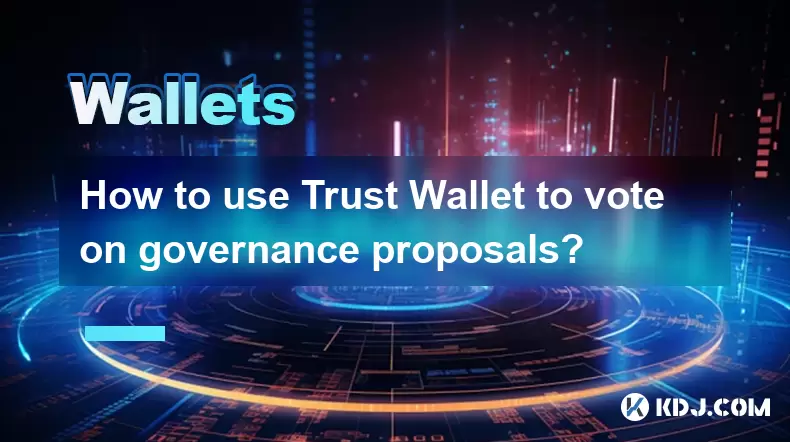
What is Trust Wallet and Governance Voting?
Trust Wallet is a popular decentralized mobile wallet that supports a wide range of cryptocurrencies and blockchain networks. It allows users to securely store, send, receive, and interact with various blockchain-based applications (dApps). One of the key features available in many blockchain ecosystems is governance voting, which enables token holders to participate in decision-making processes for protocol upgrades, fund allocations, or policy changes.
Governance proposals are typically initiated by developers or community members and require token holders to vote using their staked or held tokens. Trust Wallet integrates with several blockchains that support governance mechanisms, such as Binance Smart Chain (BSC), Ethereum, and others. This guide will walk you through how to use Trust Wallet to engage in these on-chain voting activities.
Preparing Your Trust Wallet for Governance Voting
Before participating in any governance vote, ensure your Trust Wallet is properly set up and contains the necessary tokens eligible for voting. The first step is to confirm that the blockchain network you want to vote on is supported by Trust Wallet. Most major networks like Ethereum, BSC, Polygon, and Fantom are already integrated.
Next, make sure you have the correct amount of governance tokens in your wallet. These are usually native tokens of the project or platform proposing the change. For example, if you're voting on a proposal related to a DeFi protocol on BSC, you might need its native token like CAKE or BNB.
Ensure your wallet has enough network fees (gas) in the native token of the chain you're voting on. Without sufficient gas fees, your transaction may fail. Also, connect your Trust Wallet to the appropriate dApp interface where the governance vote is hosted—this is often done via a web browser or within the app itself.
Connecting Trust Wallet to Governance Platforms
Many governance platforms operate as decentralized applications (dApps), requiring you to connect your wallet before interacting with them. Open the DApp browser inside Trust Wallet, or access the governance platform through a regular browser and look for the "Connect Wallet" option.
Once there, select Trust Wallet from the list of available wallets. A pop-up will appear asking for permission to connect. Confirm the connection request, and your wallet address should now be linked to the governance platform.
Make sure the connected wallet address holds the required tokens for voting. Some platforms may display multiple addresses if you have more than one account in Trust Wallet—ensure you’re using the correct one. Once connected, navigate to the governance section of the platform to view active proposals.
Viewing and Selecting Governance Proposals
After successfully connecting your Trust Wallet to the governance platform, go to the “Governance” or “Vote” section of the dApp. Here, you'll see a list of current proposals open for voting. Each proposal usually includes details like the title, description, options (Yes/No/Abstain), voting period, and the number of votes needed.
Click on a specific proposal to review all the information thoroughly. Understanding the implications of each vote is crucial, as your decision affects the future of the protocol or project.
Some platforms show how many votes you can cast based on the number of tokens you hold or stake. If everything looks good, proceed to the next step to cast your vote directly from Trust Wallet.
Casting Your Vote via Trust Wallet
To cast your vote, locate the “Vote” button under the selected proposal and choose your preferred option—Yes, No, or Abstain. The interface will prompt you to confirm the transaction via Trust Wallet.
Open the Trust Wallet app to review the transaction details. Double-check the proposal ID, vote choice, and associated gas fees. Confirm the transaction once satisfied. Depending on network congestion, it may take a few seconds to a couple of minutes for your vote to be recorded on-chain.
Never close the confirmation window until the transaction is completed. After confirmation, return to the governance platform and refresh the page to verify that your vote has been registered. You can also check your transaction history in Trust Wallet to confirm successful execution.
Frequently Asked Questions
Can I vote on multiple governance proposals at once using Trust Wallet?
No, each vote must be cast individually per proposal. You need to go through the process for each governance initiative you wish to participate in.
Do I need to keep my Trust Wallet open after casting a vote?
No, once the transaction is confirmed on the blockchain, your vote is permanently recorded. You don’t need to keep the app open afterward.
What happens if I vote but later change my mind?
Most governance systems do not allow changing your vote once submitted. Always double-check your decision before confirming the transaction.
Is there a minimum token requirement to vote on governance proposals?
It depends on the specific protocol or platform. Some require a minimum number of tokens to participate, while others allow even small balances to cast votes. Check the platform’s documentation for exact requirements.
Disclaimer:info@kdj.com
The information provided is not trading advice. kdj.com does not assume any responsibility for any investments made based on the information provided in this article. Cryptocurrencies are highly volatile and it is highly recommended that you invest with caution after thorough research!
If you believe that the content used on this website infringes your copyright, please contact us immediately (info@kdj.com) and we will delete it promptly.
- Powell, Stablecoin Regulation, and Circle's Bold Move: A New York Minute on Crypto's Future
- 2025-07-02 02:30:12
- Ethereum Price, Tom Lee, and Bitcoin: A New Era for Crypto?
- 2025-07-02 02:30:12
- Hoskinson, Ripple, Cardano DeFi: A New Era of Collaboration?
- 2025-07-02 02:35:12
- BlockDAG, ALGO, and the Crypto Trends Shaping 2025
- 2025-07-02 01:50:12
- Cold Wallet, Token, Gains: Is CWT the Smartest Crypto Move?
- 2025-07-02 01:10:12
- Pi Coin's Rocky Ride: Support Levels, Recovery Timeline, and What the Experts Are Saying
- 2025-07-02 01:10:12
Related knowledge
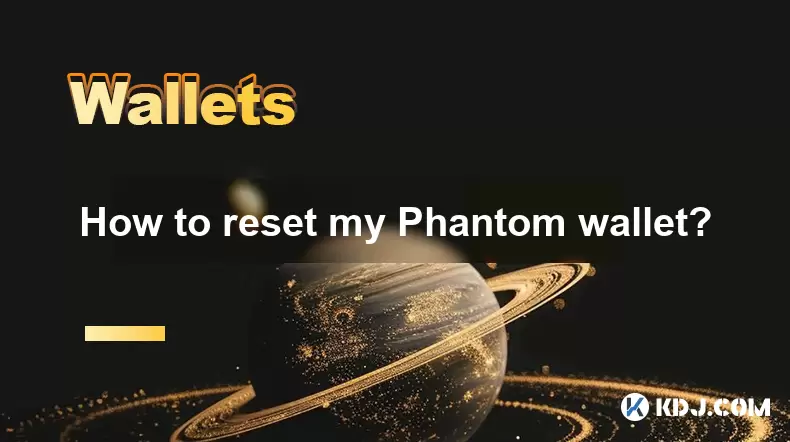
How to reset my Phantom wallet?
Jul 02,2025 at 12:36am
Understanding the Need for Resetting Your Phantom WalletIf you're using a Phantom wallet, you may encounter situations where resetting your wallet becomes necessary. This could be due to forgotten passwords, seed phrase issues, or account corruption. Phantom is a non-custodial wallet primarily used for interacting with the Solana blockchain, and it stor...
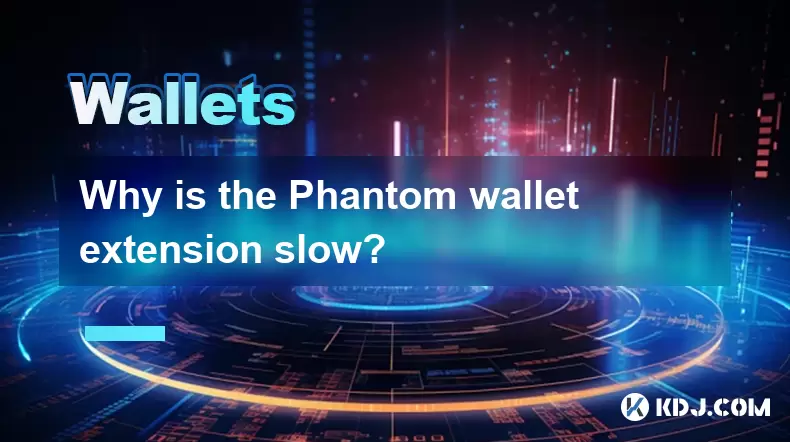
Why is the Phantom wallet extension slow?
Jul 02,2025 at 04:15am
Phantom Wallet Extension: Why Is It Slow?Phantom wallet is a widely used browser extension for interacting with decentralized applications (dApps) on the Solana blockchain. Despite its popularity, some users report that the Phantom wallet extension runs slowly at times. This article delves into potential reasons behind this performance issue and provide...
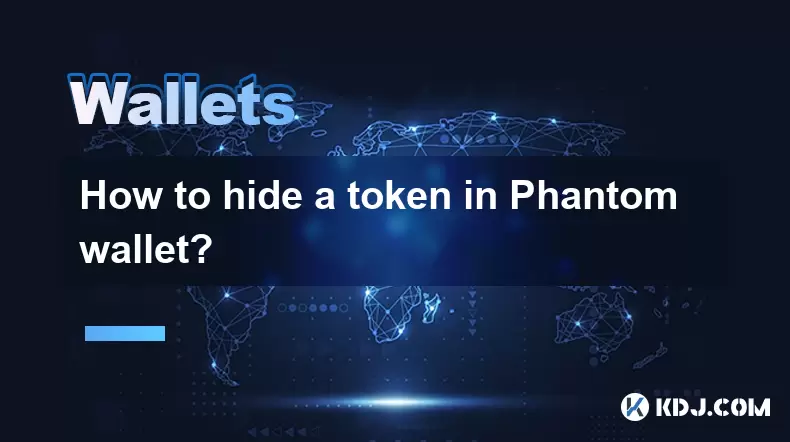
How to hide a token in Phantom wallet?
Jul 01,2025 at 05:49pm
Understanding the Phantom Wallet InterfacePhantom wallet is a popular non-custodial wallet used primarily for interacting with the Solana blockchain. It allows users to store, send, receive, and manage various tokens, including both fungible and non-fungible tokens (NFTs). Before attempting to hide a token, it's essential to understand how the wallet in...
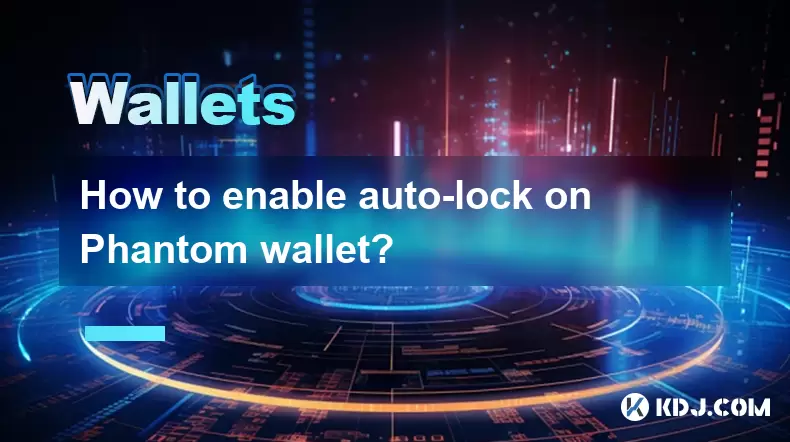
How to enable auto-lock on Phantom wallet?
Jul 01,2025 at 04:01pm
What is Auto-Lock in Phantom Wallet?Phantom wallet is a popular non-custodial cryptocurrency wallet used primarily for interacting with the Solana blockchain. One of its security features includes the ability to set an auto-lock timer, which ensures that the wallet locks itself automatically after a period of inactivity. Auto-lock enhances security by p...
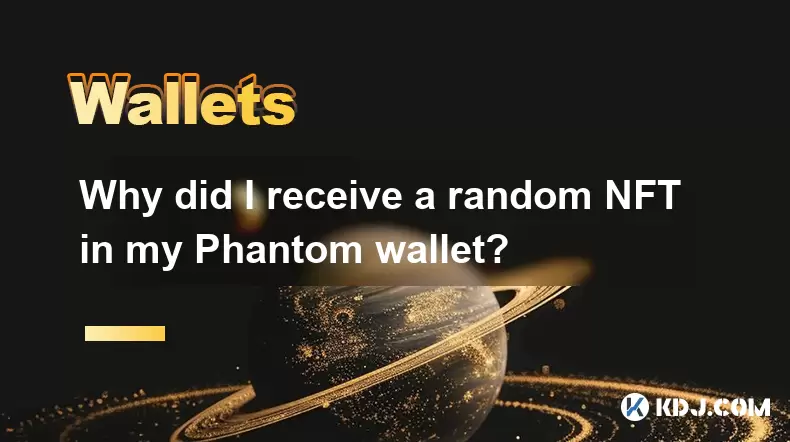
Why did I receive a random NFT in my Phantom wallet?
Jul 01,2025 at 09:00pm
Receiving an Unexpected NFT in Your Phantom WalletIf you've recently opened your Phantom wallet and noticed an unfamiliar NFT appearing in your collection, you're not alone. Many users have reported receiving random or unsolicited non-fungible tokens, often without any prior interaction with the project or sender. This phenomenon has become increasingly...
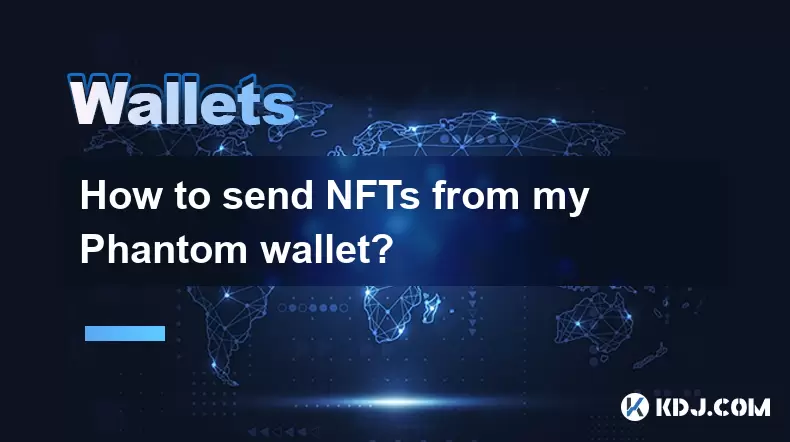
How to send NFTs from my Phantom wallet?
Jul 02,2025 at 03:15am
What is Phantom Wallet and Why Use It for NFT Transfers?Phantom wallet is a non-custodial cryptocurrency wallet primarily used for interacting with the Solana blockchain. It supports both tokens and NFTs, making it a popular choice among users who engage in decentralized finance (DeFi) or digital collectibles. The interface is user-friendly, allowing ev...

How to reset my Phantom wallet?
Jul 02,2025 at 12:36am
Understanding the Need for Resetting Your Phantom WalletIf you're using a Phantom wallet, you may encounter situations where resetting your wallet becomes necessary. This could be due to forgotten passwords, seed phrase issues, or account corruption. Phantom is a non-custodial wallet primarily used for interacting with the Solana blockchain, and it stor...

Why is the Phantom wallet extension slow?
Jul 02,2025 at 04:15am
Phantom Wallet Extension: Why Is It Slow?Phantom wallet is a widely used browser extension for interacting with decentralized applications (dApps) on the Solana blockchain. Despite its popularity, some users report that the Phantom wallet extension runs slowly at times. This article delves into potential reasons behind this performance issue and provide...

How to hide a token in Phantom wallet?
Jul 01,2025 at 05:49pm
Understanding the Phantom Wallet InterfacePhantom wallet is a popular non-custodial wallet used primarily for interacting with the Solana blockchain. It allows users to store, send, receive, and manage various tokens, including both fungible and non-fungible tokens (NFTs). Before attempting to hide a token, it's essential to understand how the wallet in...

How to enable auto-lock on Phantom wallet?
Jul 01,2025 at 04:01pm
What is Auto-Lock in Phantom Wallet?Phantom wallet is a popular non-custodial cryptocurrency wallet used primarily for interacting with the Solana blockchain. One of its security features includes the ability to set an auto-lock timer, which ensures that the wallet locks itself automatically after a period of inactivity. Auto-lock enhances security by p...

Why did I receive a random NFT in my Phantom wallet?
Jul 01,2025 at 09:00pm
Receiving an Unexpected NFT in Your Phantom WalletIf you've recently opened your Phantom wallet and noticed an unfamiliar NFT appearing in your collection, you're not alone. Many users have reported receiving random or unsolicited non-fungible tokens, often without any prior interaction with the project or sender. This phenomenon has become increasingly...

How to send NFTs from my Phantom wallet?
Jul 02,2025 at 03:15am
What is Phantom Wallet and Why Use It for NFT Transfers?Phantom wallet is a non-custodial cryptocurrency wallet primarily used for interacting with the Solana blockchain. It supports both tokens and NFTs, making it a popular choice among users who engage in decentralized finance (DeFi) or digital collectibles. The interface is user-friendly, allowing ev...
See all articles

























































































